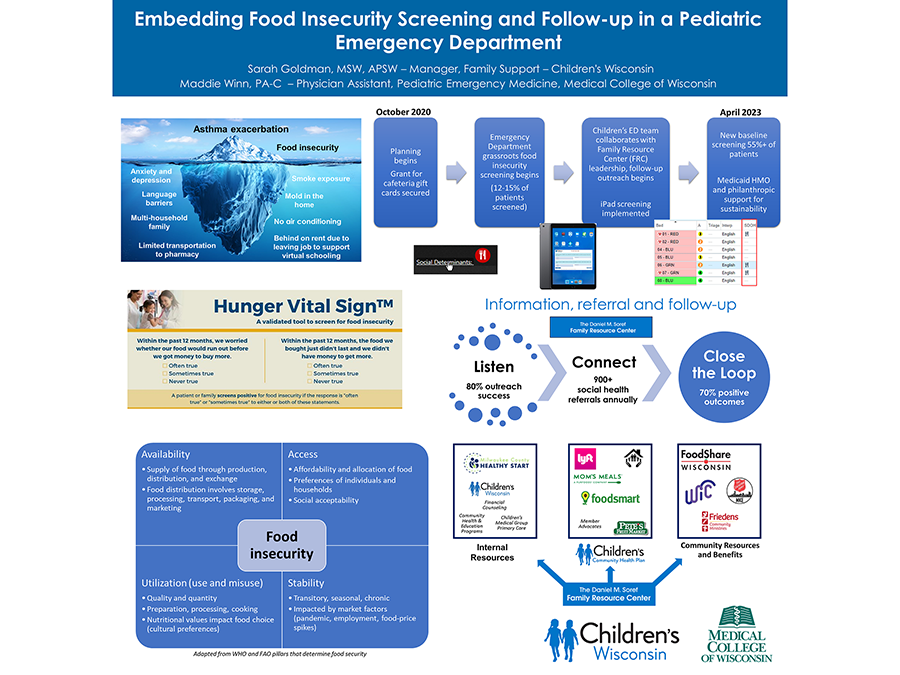Embedding Food Insecurity Screening and Follow-up in a Pediatric Emergency Department
Even before the pandemic, research showed up to 50% of children presenting in Children’s emergency department (ED)experienced food insecurity. Emergency Medicine providers saw firsthand how this was impacting kids and family’s well-being and overall health outcomes. In conjunction with the EDTC’s Social Medicine and Advocacy Committee, these provider leaders advocated implementing food insecurity screening as a standard of care. Grassroots efforts led to a partnership with Children’s Health Management Team and Daniel M. Soref Family Resource center, moving the initiative from grassroots to a full-scale wrap-around care model. Now, over 50-60% of patients are screened for food insecurity, using the national standard Hunger Vital Sign questions, which are documented in the electronic health record. Just as if a provider has ordered a medication, if families screen positive for food insecurity risk, electronic decision support is provided to the nursing team to obtain a $15 cafeteria gift card for the family. This is a key element of the program that offers real-time support as well as a trust building opportunity with the family. The gift card envelope also contains a QR code which links to a resource page with local emergency food and benefits navigation resources.
Within three days of an ED visit, the family receives a call from Children’s Family Resource center team members, who utilize a nationally validated information and referral model to wrap around a family’s holistic needs. Food insecure families are supported with understanding and navigating their FoodShare and WIC benefits or connected with local food pantries. Above and beyond food security resources, families receive support for re-engaging with a primary care medical home, utility assistance, housing navigation, or support navigating the health system for their medical needs. The Family Resource center team can connect with an unprecedented 70% of families after their visit, and six weeks later they close the loop with families to find out if the resources or referrals had a meaningful impact.
